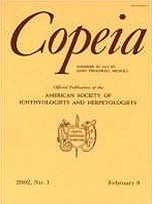Polyphenisms (environmentally cued polymorphisms) are ubiquitous, yet the specific proximate mechanisms producing alternative morphs are generally not well known. We tested hypotheses for the role of large heterospecific prey in the cannibalistic polyphenism within larval tiger salamanders, Ambystoma tigrinum nebulosum, to determine whether heterospecific prey directly or indirectly influence the production of cannibal morphs. Field surveys suggested, and laboratory experiments confirmed, that macroinvertebrate prey induce cannibals via an increase in body size variation within larval salamander populations. Dietary data and laboratory foraging experiments revealed that cannibals preferred conspecifics even when their capture success was greater on macroinvertebrates. Typical morphs, in contrast, consumed only macroinvertebrate and other prey and never successfully cannibalized conspecifics. Our results support the indirect hypothesis that cannibals are induced via increased body size variation within a population of larvae, as a result of differential consumption of large heterospecific prey, and do not rely on consumption of heterospecific prey once they are cannibals. The cannibalistic polyphenism is one example of phenotypic plasticity in which the functional significance and the proximate mechanisms producing the two morphs are becoming clearer, allowing further study of the molecular and physiological basis of the alternative phenotypes.
How to translate text using browser tools
1 February 2003
Heterospecific Prey and Trophic Polyphenism in Larval Tiger Salamanders
Howard H. Whiteman,
Judy P. Sheen,
Eric B. Johnson,
Anna VanDeusen,
Robin Cargille,
Tyson W. Sacco
ACCESS THE FULL ARTICLE





